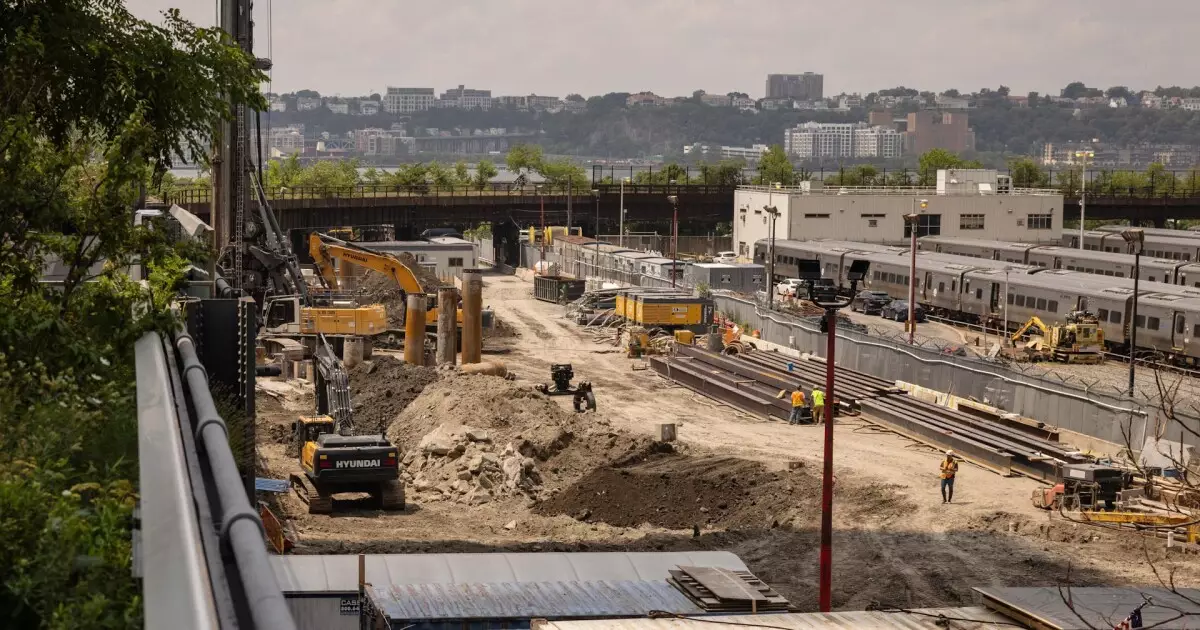Progress and Challenges of the Hudson Tunnel Project: A Comprehensive Overview

The Gateway Development Commission (GDC) is poised to secure its last grant for the Hudson Tunnel Project by the end of this month, completing a substantial funding framework that already includes a $3.8 billion grant from the Federal Railroad Administration. According to Chief Financial Officer (CFO) Pat McCoy, this federal grant is the final piece of an overall funding package essential for the project’s progress. The total cost of the Hudson Tunnel Project is estimated at $16.3 billion, which encompasses the construction of new tracks, burrowing of new tunnels, and refurbishment of aging infrastructure. By collaborating with multiple state and federal agencies, the commission aims to enhance this crucial rail link between New York and New Jersey, a segment integral to the Northeast Corridor.
McCoy underscored the meticulous planning involved, stating that managing such a project requires extensive coordination among various stakeholders. In a time when the importance of efficient transportation networks has never been so paramount, the GDC’s work on the Hudson Tunnel Project can be seen as a response to the urgent need for modernization of America’s infrastructure.
The Hudson Tunnel, which currently operates through a 114-year-old tunnel, faces obstacles that are both infrastructural and political in nature. While the urgency for development has been recognized at the highest levels of government, securing funding has historically been a convoluted process. Notably, the previous administration posed threats to the project’s federal finances, but McCoy remains confident that current funding efforts will materialize without similar hindrances. The role of political backing is crucial, especially given systemic interruptions faced in the past, including the project’s stall due to former New Jersey Governor Chris Christie’s decisions in 2010.
It highlights a broader theme within infrastructural development: the dependency on political will and stability. Political shifts can affect not only funding allocations but also the public perception and urgency surrounding infrastructural projects. The GDC’s adept navigation of this complicated landscape is commendable, maintaining a focus on completing a foundational aspect of Northeast transportation.
The complexity of funding for such a large-scale project cannot be overstated. McCoy discussed the arduous path to securing federal grants, which included a significant $6.88 billion full funding grant agreement, marking it as the largest federal transportation grant in history. This funding will be supplemented by various loans that offer a flexible repayment schedule, ensuring that the financial burden does not overwhelm the GDC in its initial phases.
It is significant that the commission has also established a revolving credit facility with Bank of America, demonstrating a proactive approach to liquidity management. Furthermore, McCoy indicated the distribution of costs among states, with New York and New Jersey also pitching in to ease the financial strain. This collaborative funding model serves as a blueprint for future infrastructure projects, offering a template for public-private partnerships that align regional interests while enhancing infrastructural capabilities.
As of now, the GDC has several active construction projects that are vital for progressing the overall plan. Notably, the Tonnelle Avenue Bridge and Utility Relocation Project, which is expected to be completed in 2027, is one of three ongoing initiatives. The efforts are not just centered on the Hudson River; New York has its share of developments aimed at connecting new tunnels to Penn Station directly. The dual focus on both New Jersey and New York sites demonstrates a strategic understanding of the necessity of creating a seamless transportation network.
Additionally, McCoy highlighted an impending milestone with the Palisades Tunnel Project, signaling a new phase in tunnel construction. Through these ongoing projects and the necessary groundwork being laid, one can garner optimism about the eventual operational capabilities of the Hudson Tunnel.
Ultimately, the Hudson Tunnel Project encapsulates more than just a series of construction efforts; it represents a national priority in addressing aging infrastructure. President Biden explicitly stated that the development of new tunnels is among the most pressing infrastructure needs in the U.S. The political context surrounding the project further stresses an inherent necessity for reliable transportation options, which impacts commerce, commuting, and the overall economy.
The focus on modernizing rail connectivity not only seeks to alleviate congestion but also prioritizes sustainability through enhanced transit options. As construction progresses towards its ambitious 2027 completion date, observers can only hope that the integration of modern technologies and methods will lay the groundwork for similar projects across the nation. The Hudson Tunnel Project may well serve as a model for how infrastructure development should proceed against a backdrop of political complexity and fiscal responsibility, ultimately working towards a more interconnected future.





